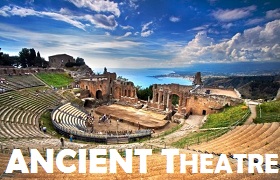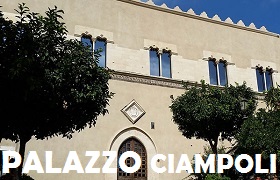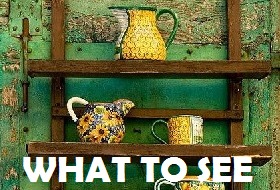TAORMINA
THE ODEON
in Via Don Bosco (behind Palazzo Corvaja)
Taormina The Odeon. There are no doubts as to the origins of the Odeon, or “small theatre”. It was built directly by the Romans when Taormina became a military colony in the year 21 B.C. under Caesar Augustus Octavian, the first Roman emperor.
Much smaller than the other theatre, it is evidence of how important culture was to Taormina in those days. The small theatre is just behind a hill named after St. Catherine of Alexandria in Egypt, near Palazzo Corvaja. lt was found accidentally on June 5th 1892 and until that moment no one had even suspected it existed. The story of its discovery is an unusual one.
A blacksmith named Antonio Bambara was digging in his land behind St. Catherine’s Church when his pick uncovered a red brick construction. A year later the real excavations began and the Odeon appeared, badly damaged in various sections.


TAORMINA
THE ODEON
The architecture of the Roman Odeon is almost identical to that of the larger theatre. The monument is oriented differently. In fact, the Greek-Roman Theatre faces the south while the small Odeon faces north-east. lt was built with lateritious material, in other words with large clay bricks joined together with lime.
Taormina The Odeon, has the same construction plan as all other Roman theatres and is divided into three main sections: the scene, the orchestra and the cavea. The scene of the Odeon consisted of the stylobate (base) and the peristyle (colonnade) of a Greek temple, some say dedicated to Aphrodite, which was discovered during the excavations on the Odeon.
Apart from theatrical performances, this small Odeon, built right in the centre of the Polis, is thought to have been used for musical recitals and auditions reserved to magistrates, important civil, military and religious people and their families as well as to guests of consequence.
.


























